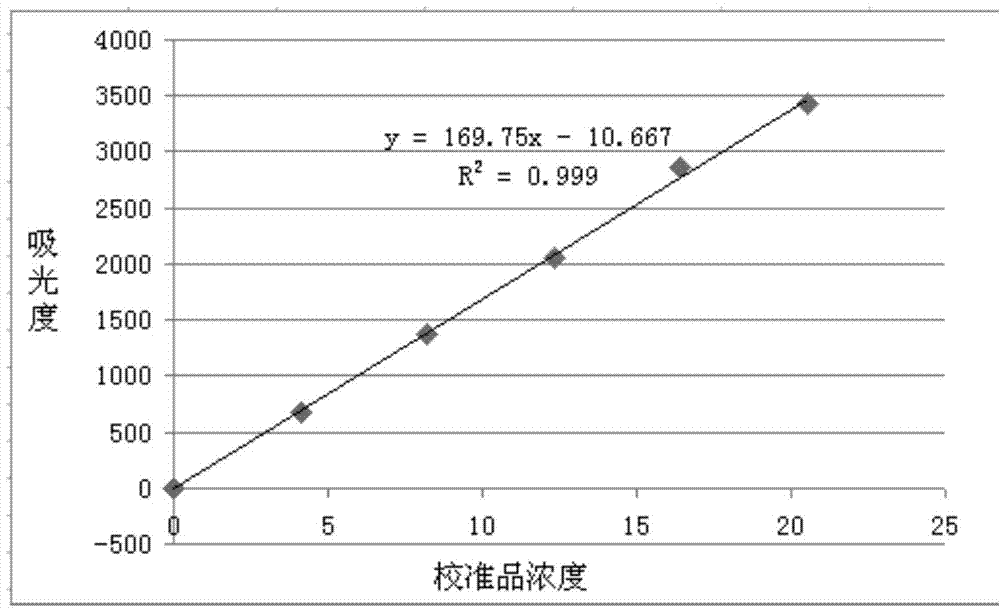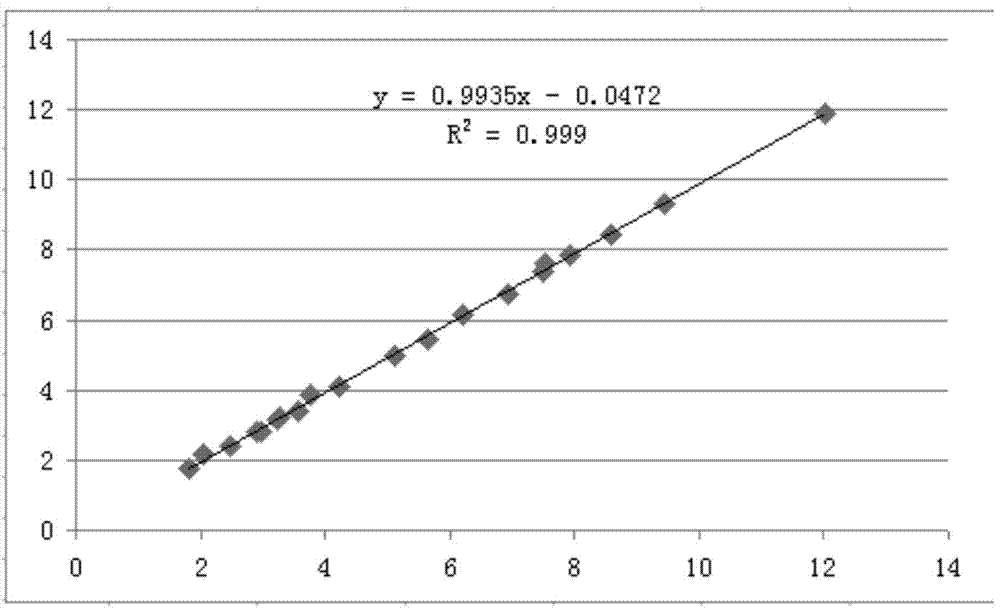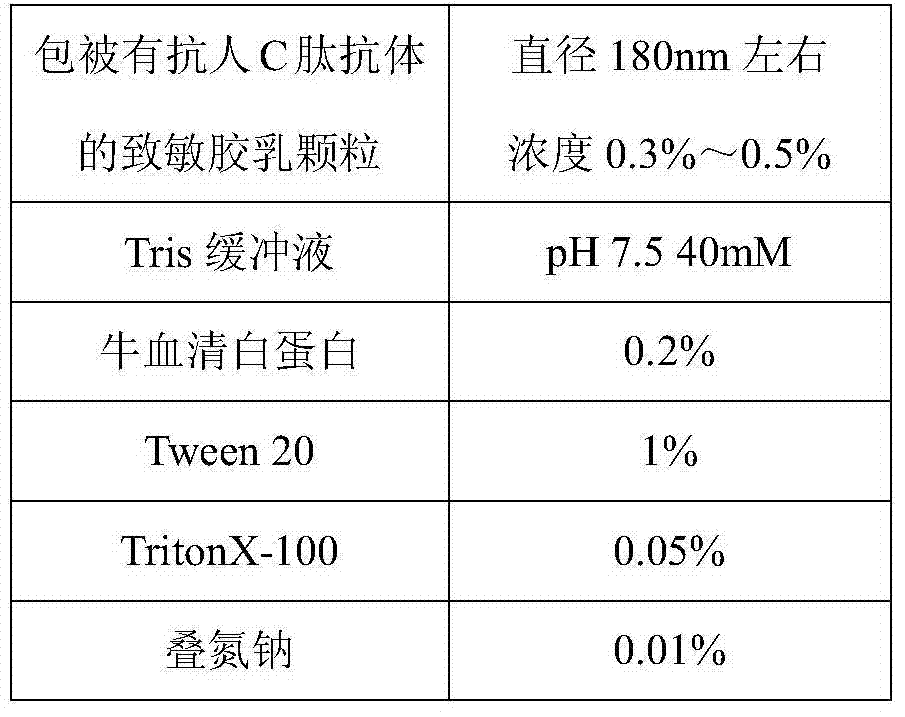Method for detecting content of C peptide in human serum, kit used by method and preparation method thereof
A kit and reagent technology, applied in the field of medical laboratory science, can solve the problems of radioactive pollution and high detection cost, and achieve the effects of low detection cost, no radioactive pollution and convenient operation.
- Summary
- Abstract
- Description
- Claims
- Application Information
AI Technical Summary
Problems solved by technology
Method used
Image
Examples
Embodiment 1
[0032] This example provides the first reagent and its preparation method.
[0033] (1) For the main components and concentration of the first reagent, see the following table:
[0034] Tris buffer pH7.5 40mM Polyethylene glycol 6000 4% Magnesium chloride 5% Tween20 1% TritonX-100 0.05% Bovine serum albumin 0.2% EDTA 0.04% Sodium azide 0.01%
[0035] (2) The preparation method of the first reagent: add the above-mentioned components of corresponding concentration in order in order, stir at low speed until all are dissolved, adjust the pH to 7.5, add distilled water to the required volume, and mix at room temperature for about 30 After filtering with 0.45μm pore size filter, store at 2~8℃ after completion. The first reagent is a colorless or slightly yellow transparent liquid.
Embodiment 2
[0037] This example provides the second reagent and its preparation method.
[0038] (1) For the main components and concentration of the second reagent, see the following table:
[0039]
[0040] (2) Preparation method of the second reagent:
[0041] a) Latex activation: Take a proper amount of latex, wash with 10 times the volume of latex 40mM Tris buffer (pH 7.5), then dilute to 4 times the volume with 0.04M Tris buffer, and add 1% latex volume of 1% EDC Evenly shake and activate, the activation time is 30min;
[0042] b) Antibody labeling: Add C-peptide antibody (addition ratio of 2-6mg antibody per ml of latex) to the activated latex, shake slightly and evenly at 37°C for 2 hours, then add half the volume of blocking buffer at room temperature Shake evenly for 2 hours. The main components and concentrations of the blocking buffer are shown in the following table:
[0043] Bovine serum albumin Tris pH7.5 Glycine Tween20 0.2% 40mM 0.5% 1%
[0044] c) Washing and reconstitution...
Embodiment 3
[0049] This example provides the calibrator and its preparation method.
[0050] (1) For the main components and concentrations of the calibrator, see the following table:
[0051] Pure C-peptide protein 20ng / ml Tris buffer pH7.540mM Bovine serum albumin 0.2% Tween20 1% TritonX-100 0.05% Sodium azide 0.01%
[0052] (2) Preparation method of calibrator: add the above-mentioned components of corresponding concentration in order in order, stir at low speed until all are dissolved, adjust the pH to 7.5, add distilled water to the required volume, and mix at room temperature for about 30 minutes. Filter with a 0.45μm pore size filter to prepare the highest concentration calibrator. A series of calibrators can be obtained from the highest concentration calibrator through multiple dilution. The prepared calibrator should be stored at 2~8℃ for short-term storage, and at minus 20℃ for long-term storage. The calibrator is a yellowish transparent liquid.
PUM
| Property | Measurement | Unit |
|---|---|---|
| Particle size | aaaaa | aaaaa |
| Wavelength | aaaaa | aaaaa |
| Wavelength | aaaaa | aaaaa |
Abstract
Description
Claims
Application Information
 Login to View More
Login to View More - R&D
- Intellectual Property
- Life Sciences
- Materials
- Tech Scout
- Unparalleled Data Quality
- Higher Quality Content
- 60% Fewer Hallucinations
Browse by: Latest US Patents, China's latest patents, Technical Efficacy Thesaurus, Application Domain, Technology Topic, Popular Technical Reports.
© 2025 PatSnap. All rights reserved.Legal|Privacy policy|Modern Slavery Act Transparency Statement|Sitemap|About US| Contact US: help@patsnap.com



